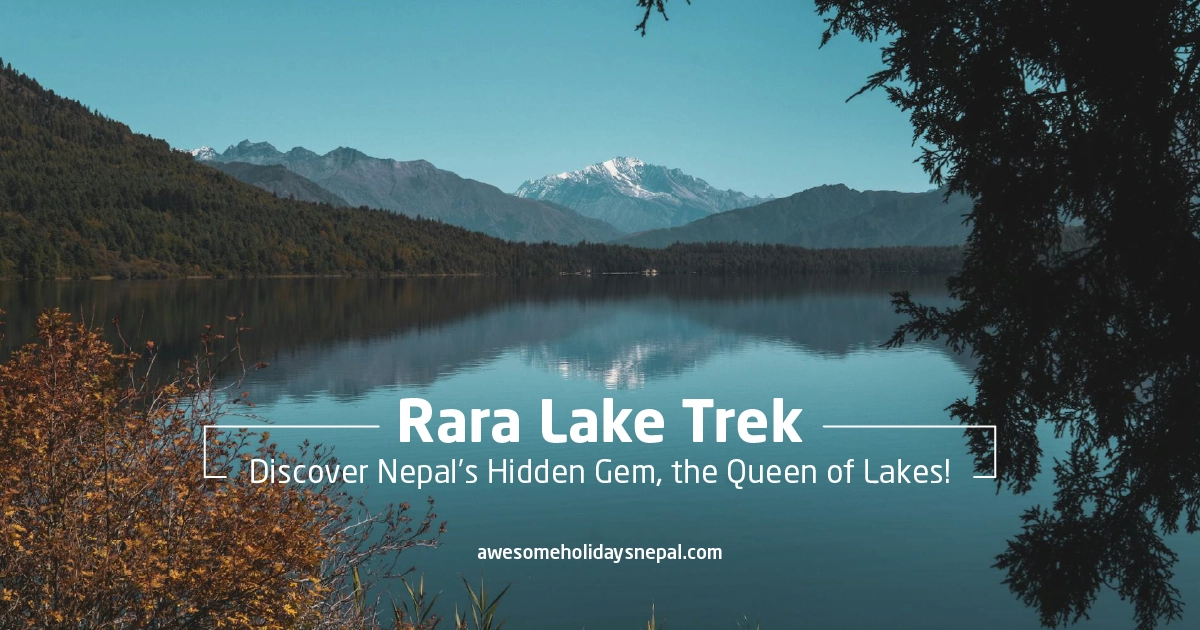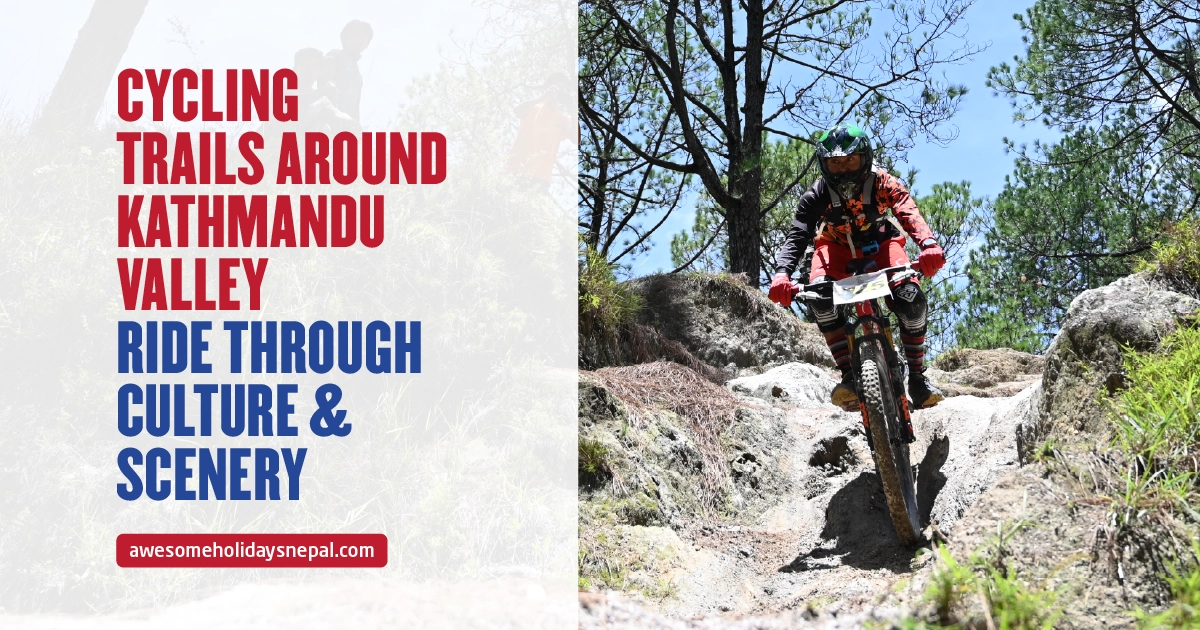Everest Trek Vs Annapurna Trek: Which is the Most Popular?
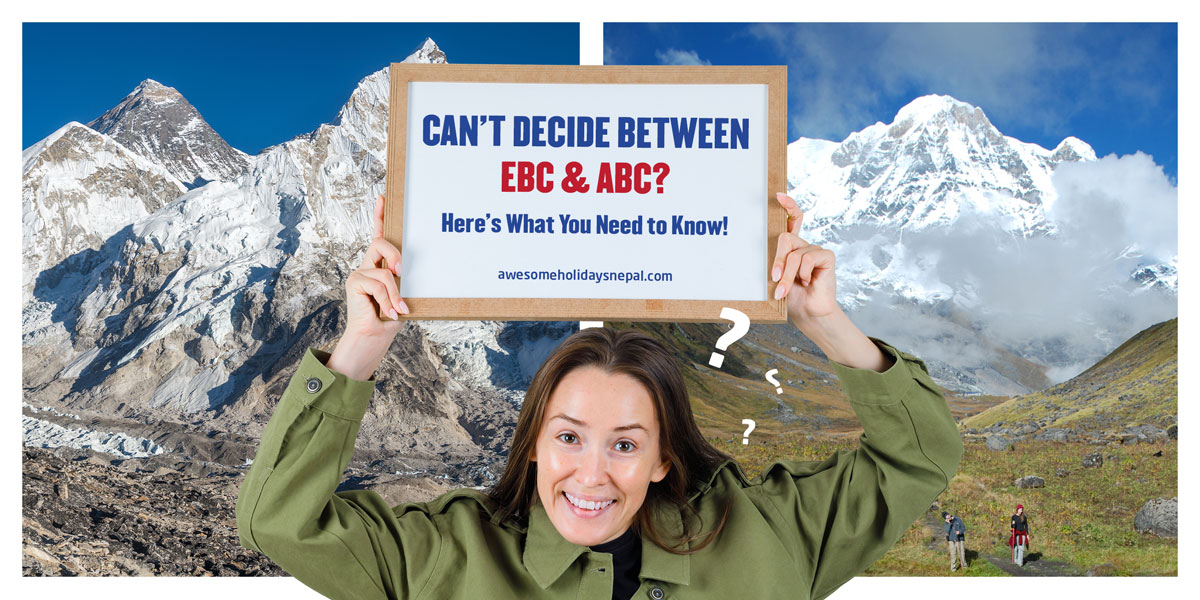
Nepal, a gorgeous small nation in the lap of the Himalayas, is home to numerous peaks. As a matter of fact, the country is home to eight out of the 14 highest eight thousanders in the world.
When you think of going on a trek, Nepal is the first name that pops into your mind. The two most popular options are the Everest Base Camp Trek and the Annapurna Circuit Trek. Both treks have their own charm, offering a unique mix of adventure, cultural experiences, and scenery.
Most of you might be torn between the two options and unable to make a decision. Here is a detailed comparison between the Everest Trek and the Annapurna Trek that will help you make your decision.
Do have a look at the following blog to find out more:
Everest Trek Vs Annapurna Trek: Which is the Most Popular?
Trek Duration, Altitude, and Difficulty
Usually, the Everest Base Camp Trek takes about two weeks. The EBC trek is considered as moderate treks. The trek commences after a fast and exhilarating flight from Kathmandu to Lukla. From there, the path slowly ascends and runs over Namche Bazaar, Teng Boche, Ding Boche, and Lobuche before you arrive at Everest Base Camp.
Without a doubt, the Kala Patthar, is the highlight of the journey where one may see the stunning sight of Mount Everest. Given the extreme ascent and altitude sickness, the trip is demanding, therefore you need to have proper acclimatization all over.
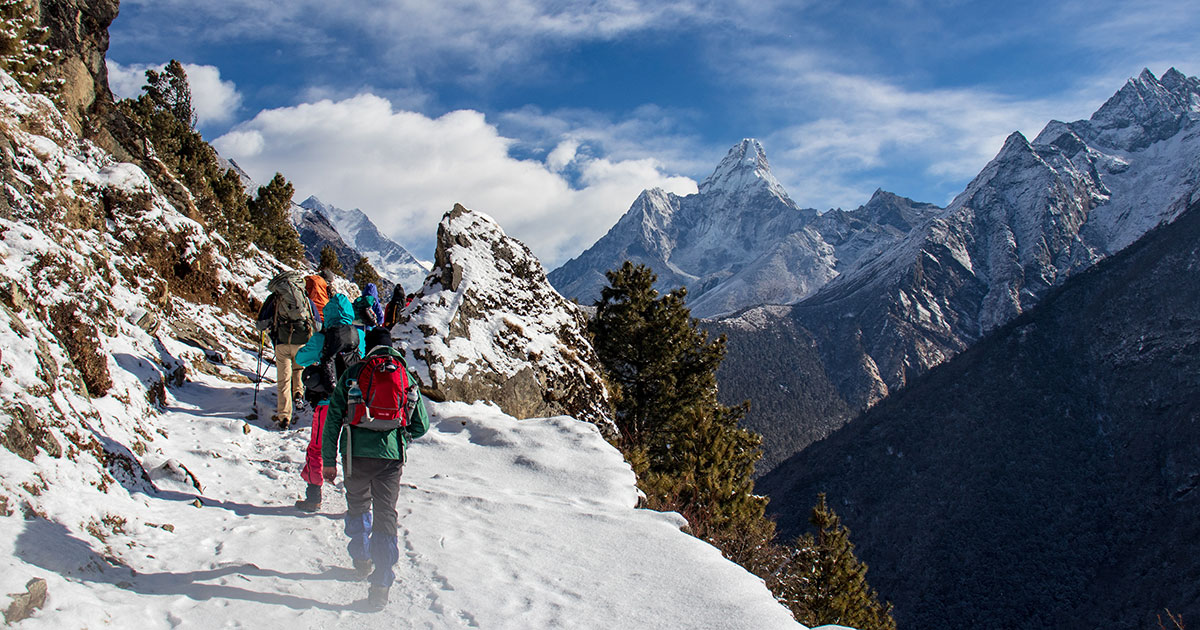
Depending on the path and speed, the Annapurna Trek lasts about fourteen days. Starting at Besisahar, the trail winds steadily up through thick forests, lush valleys, and rough mountainous topography until it reaches the highest altitude of 4,130 meters at Annapurna base Camp.
The height is much like Everest Base Camp, but the slow rise helps acclimation which is better. Although still difficult, the Annapurna trail is sometimes considered more approachable for beginners owing to the gradual altitude increase.
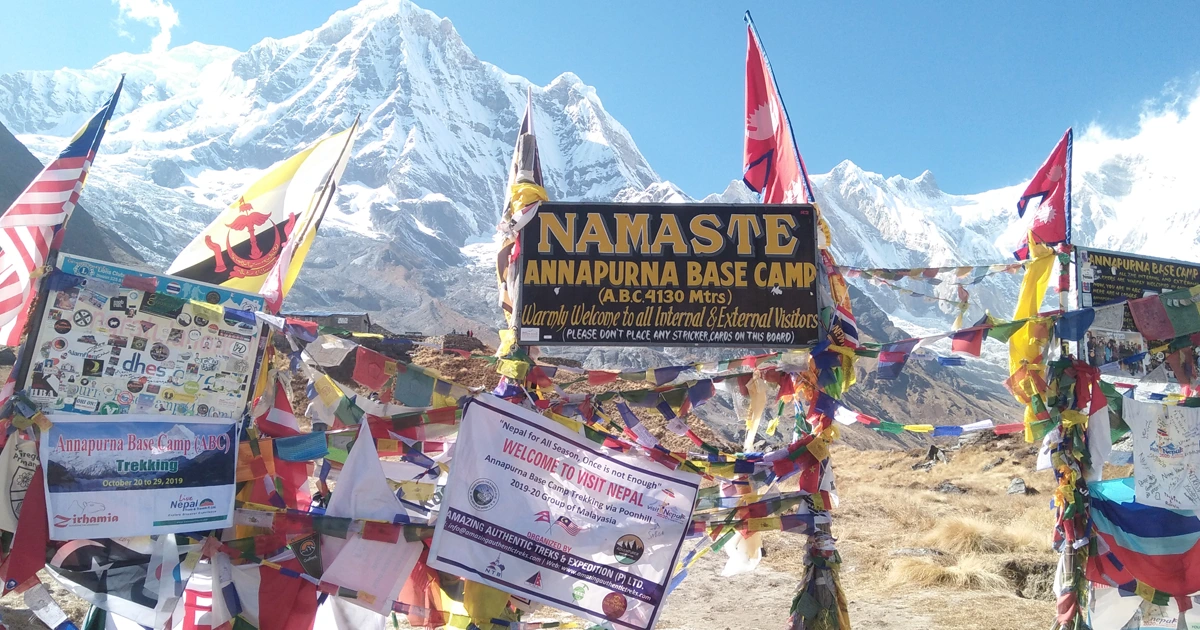
Everest Base Camp is more difficult in terms of altitude and steeper terrain; Annapurna has a longer but more gradual climb, therefore it is a better choice for those who worry about altitude sickness.
Scenery and Landscapes
Among the two popular treks, one of the main distinctions has to be the variations in scenery. The Everest trek consists mostly of high-altitude terrain including craggy moraines, glaciers, and towering snowcapped peaks. Trekkers are encircled from the very start by some of the highest peaks in the globe, such Mount Everest (8,849 meters / 29,032 feet), Lhotse, Nuptse, Ama Dablam, and Thamserku.
The Khumbu Glacier and Khumbu Icefall help to create the magnificent landscape. Still, the terrain beyond Pangboche (3,985 meters) is rocky and barren, with little plant life as hikers go up. When hikers finally hit Gorad Everest Base Camp, the terrain is completely glacial, with great ice sculptures and severe alpine conditions.
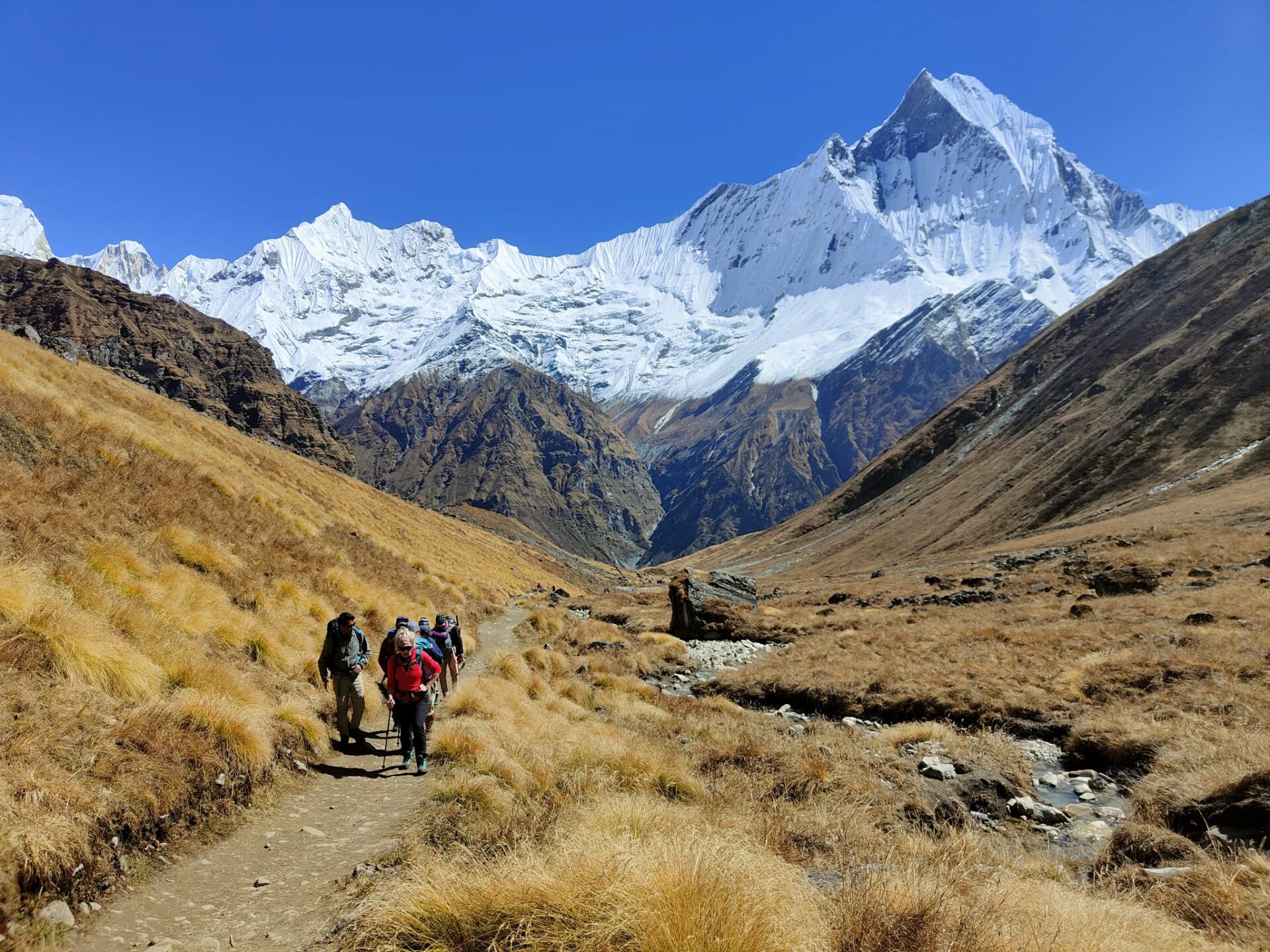
On the other hand, the Annapurna Circuit Trek provides a lot of different scenery. Before giving way to alpine meadows and high-altitude deserts, the path starts off in thick forests, paddy terraces, and beautiful green valleys.
As hikers go up, the sights change sharply—from deep river canyons like Kali Gandaki (one of the world’s deepest) to desolate, windy plateaus reminiscent of the Tibetan plateau. Annapurna I (8,091 meters), Dhaulagiri (8,167 meters), Machhapuchhre (Fishtail), and Manaslu can all be seen from the route. Unlike Everest, Annapurna’s topography alters constantly along the route, so it is a more visually outstanding trek.
Without a doubt, Everest is the superior pick if you like to traverse on tough, high-altitude terrain covered by ice and glaciers. Still, Annapurna is the obvious first choice if you enjoy diverse landscapes that change from woods to deserts to mountains. if you want to know everything about Annapurna Base Camp Trek, do read our blog.
Cultural Experience
Both the treks provide distinctive experiences culturally, but they vary in the customs and groups of people encountered on the way. The Everest region is home to Sherpa people who are well known for their mountaineering abilities and Tibetan Buddhist culture. The trekkers will definitely pass through the mani stones (stone inscriptions in Tibetan), stupas, Tibetan-style monasteries, prayer banners, and monasteries along the trail.
One of the trip’s highlights is a stop at Tengboche Monastery, the biggest Buddhist monastery in the Everest area. Similarly, in the Namche Bazaar, Khumjung, and Dingboche, you’ll get to see Sherpa communities’ typical mountain lifestyle, yak herding, and Buddhism.

In comparison, the Annapurna Circuit Trek provides a mix of Hindu and Buddhist traditions. Gurung and Magar villages, where Hindu customs prevail, are at the lower parts of the Annapurna trek. As climbers head up, they pass through Tibetan-influenced terrain such as Mustang and Manang, where Buddhism reigns supreme.
You will also get a chance to take blessings from the holy Mukti Nath Temple, which is a sacred pilgrimage destination for Hindus and Buddhists. The region is also home to Thakali people who are popular for their special cuisine, unusual architecture, and unique culture.
Accommodation and Food
Although the level of comfort differs, most of the accommodations on both paths are in teahouses. Particularly at higher altitudes, teahouses are simple in the Everest Region. Accommodations are sparse in destinations like Lobuche and Gorak Shep; they include shared rooms, no heat, and few facilities.
Meals mostly include dal bhat (lentils and rice), noodles, soup, and Tibetan bread; food alternatives too are sparse. Given that yaks and porters transport everything, costs rise much with elevation.
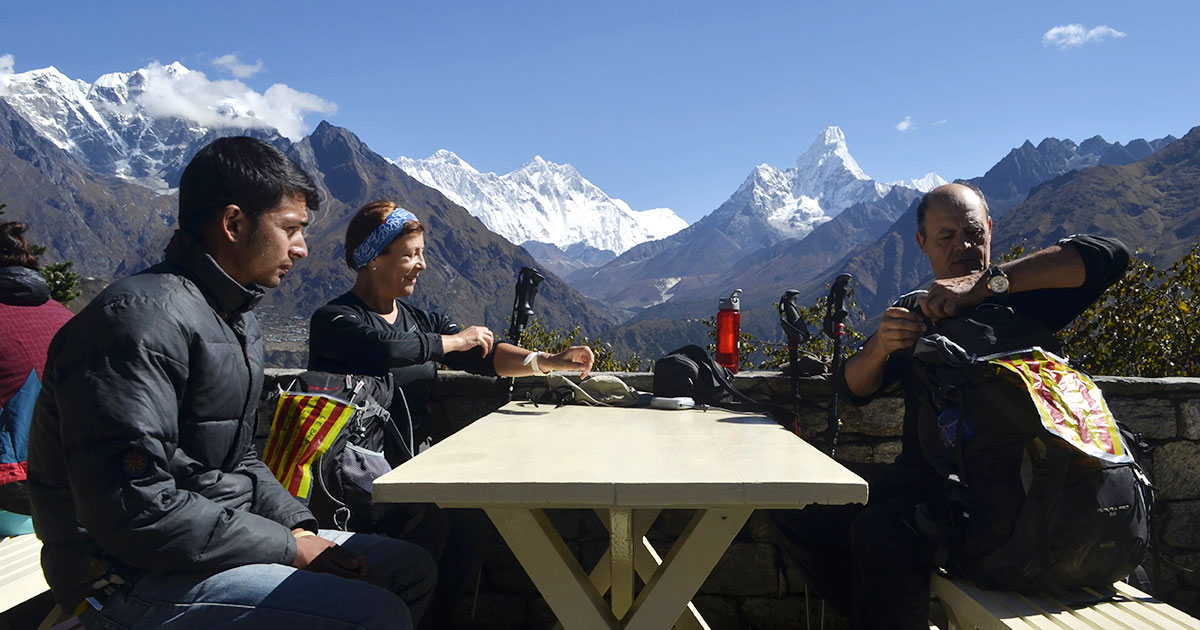
The Annapurna Circuit may, on the contrary, provide more varied dining and living arrangements. Better lodgings, more roads access down the trail and easier supply transportation apply to the lower reaches. Villages like Marpha and Jomsom also have local Thakali meals, fresh apples, and even bakeries with apple pies that trekkers may enjoy. Teahouses in the lower and mid-altitude areas usually have a better upkeep than those found on the Everest hike.
Comparatively, Annapurna provides more meal diversity and more comfort.
Permit and Accessibility
For the Everest Trek, you need to get two permits: Sagarmatha National Park Entry Permit and TIMS (Trekkers’ Information Management System) Card. Solo trekking is allowed, and many trekkers opt to hike without a guide.
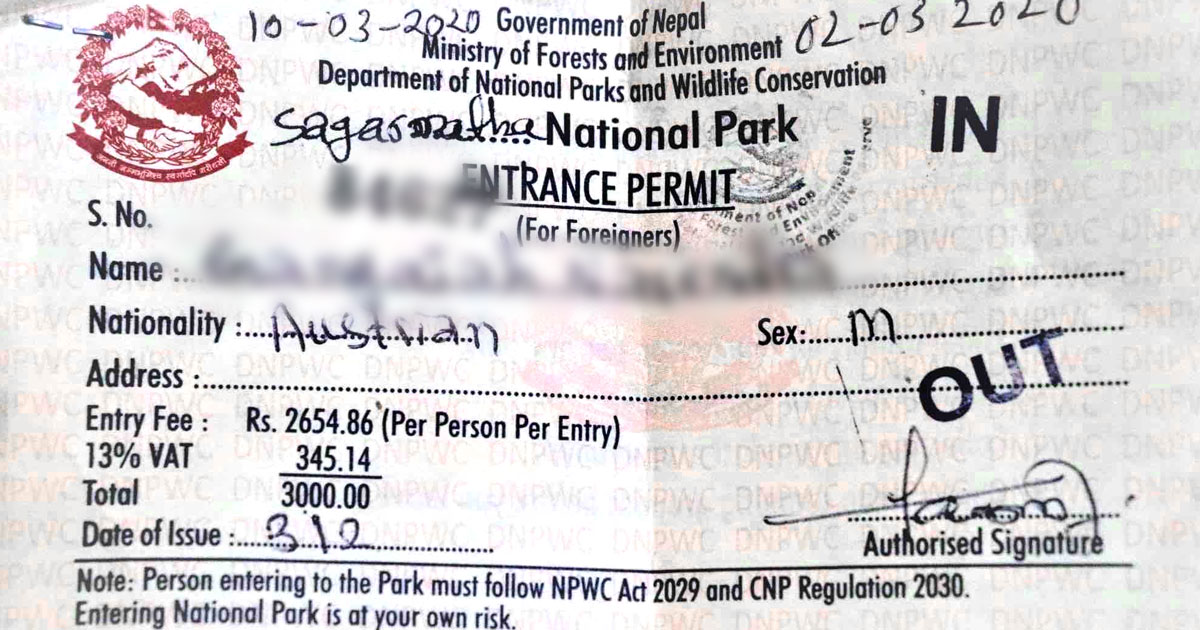
For Annapurna Base Camp trekking, trekkers must get an Annapurna Conservation Area Permit (ACAP) and Trekkers’ Information Management System (TIMS) card.
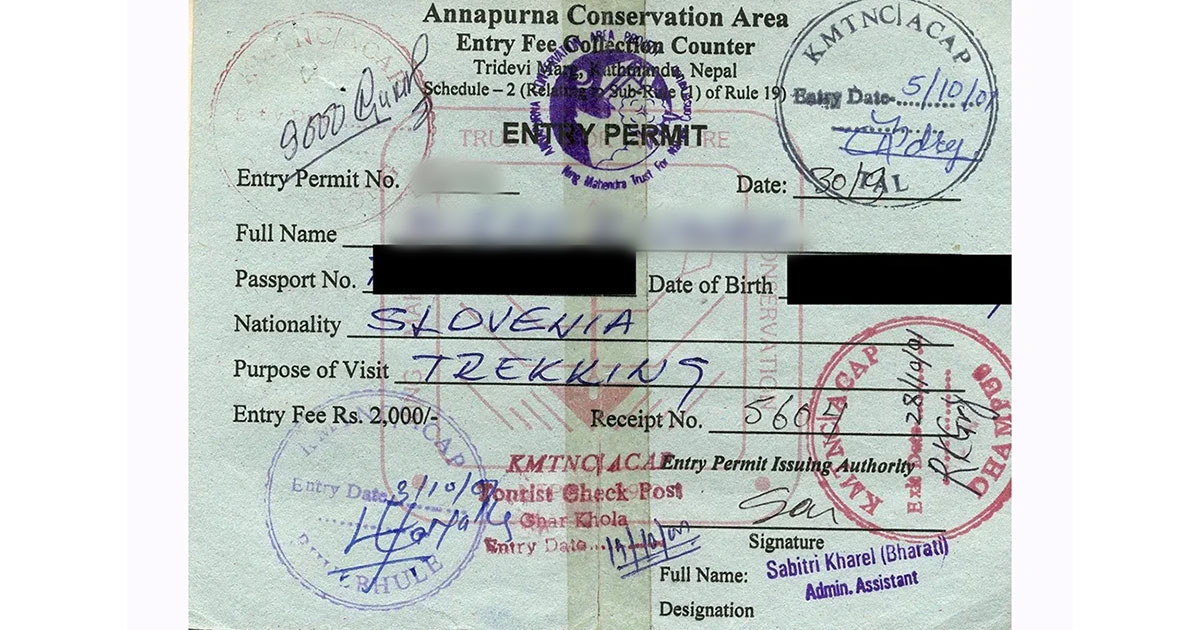
You can obtain the permits relatively easily and can be arranged independently or via a trekking agency like Awesome Holidays Nepal.
Best Time for Trek
Both of the treks’ best time to visit is during the Autumn and Spring seasons, as the climate is favorable, and the trekking route is rich in luscious greens.

For a safe, memorable, and awesome experience, plan a trek between mid-September and November or March and June.
Cost & Budget – Which Trek is Cheaper?
Comparatively, the Everest Base Camp Trek is more expensive as it costs around $1,250 to $1,850 per person, which depends on whether you hire a guide or a porter. The reason is due to the expensive Lukla flights and high-altitude costs.
Likewise, the Annapurna Circuit Trek cost ranges from $850 to $1,350 per person. That makes the trek more budget friendly. This all thanks to no flight’s requirement, so, the transportation cost is cheaper, and food/accommodation also costs cheaper.
If budget is a concern, then Annapurna Trek is the more affordable option.
You can contact reliable travel partners like Awesome holidays Nepal for more authentic package pricing.
Everest Trek vs. Annapurna Trek: The Conclusion
Both treks offer incredible experiences, but the right choice depends on your preferences and trekking style. If your lifelong dream is to view the tallest peak, Mount Everest up close, want to experience Tibetan Buddhist culture, and seek to challenge high-altitude trek, then without a doubt, go for Everest Trek
Similarly, you can opt for Annapurna Circuit Trek if you prefer a less crowded trail, budget-friendly trek, want to experience varied landscapes such as valleys, jungles, deserts, and mountains, and more.
We hope this comparison of Everest Trek vs. Annapurna Trek will be helpful for you while making your decision. Either way whichever trek you choose, we vouch that both of the treks won’t disappoint you and offer you an unforgettable Himalayan adventure.
FAQs
Expand AllHow long does the EBC trek take?
The Everest Base Camp trek usually takes 14-15 days, starting with an exhilarating flight from Kathmandu to Lukla. However, the trek duration might vary depending on your chosen route and the packages you booked.
Exploring the EBC circuit through Gokyo Lake, Gokyo-ri, and Ngozumpa Glacier might take up to 17 days, whereas including the three-pass trek in this expedition might take up to 19 days.
When is the best time to trek to Everest Base Camp?
The best time to trek to Everest Base Camp is during the Autumn and Spring seasons, as the climate is favorable, and the trekking route is rich in luscious greens. For a safe, memorable, and incredible experience, plan a trek between mid-September and November or March and June.
How long does the Annapurna trek take?
A standard Annapurna Base Camp trek usually takes 14 days to complete. However, the trek duration might vary depending on your chosen route and the packages you booked. In case you have time constraints, there is also an option for a shorter ABC trek completed in 7 days.
What kind of fitness level is required for Annapurna Trek?
To trek to the Annapurna Base Camp, you will require a moderate fitness level since you will walk at least 6-7 hours a day. You will also require good cardiovascular endurance and muscular strength to ascend quickly through rough terrain.
If you aren’t somebody who doesn’t perform physical training regularly, it is better to start training at least ¾ months in advance. Ensure you include cardio, flexibility exercises, and strength training in your workout to prepare your body for the trek.
However, for shorter treks such as Ghorepani Poon Hill, a basic fitness level is just fine.
What permits are required for Everest Base Camp Trek?
You will require two passes, the Sagarmatha National Park Entry Permit and the Khumbu Pasang Lhamu Municipality Entry Permit to trek through the Everest region. Apart from these, you can get the optional Gaurishankar Conservation Area permit if you hike from Jiro to Everest.
These passes can be obtained easily from the Tourism Board of Nepal or from the Lukla or Monjo check post if you are already in Lukla.
What permits are required for Annapurna Circuit Trek?
To trek through the Annapurna Base Camp, you will require two passes: the Annapurna Conservation Area Permit and the TIMS card. These passes can be obtained easily from the Tourism Board of Nepal.
What is the trek route to ABC like?
The trekking route to the Annapurna Base Camp consists of rough, rocky terrain, steep hills, stairs, and narrow trails. You will encounter suspension bridges, a biodiversity conservation area, luscious green forests, and locally inhabited villagers along your path.
How do I deal with altitude sickness?
If you get altitude sickness on your way to the ABC, let your trekking guide know about the situation. The guides are prepared with first aid required for such a situation.
Rest at the same spot and take anti-sickness medications. After you feel a little better, descend to a lower altitude. In case the situation worsens, ask the guide to contact the head office in Kathmandu for a helicopter rescue.
What kind of accommodation is available in ABC Trek?
While standard, three-star, and five-star accommodations are available in Kathmandu and Pokhara, the options might be restricted on the trekking route. Along the route, you will most likely find tea houses with clean rooms.
And yes, getting private rooms or rooms with attached bathrooms is possible, but you will have to pay an extra charge.
What is the best time for these treks?
Both treks are best done in Spring (March to May) and Autumn (September to November) when the weather is stable, and the views are clear.
Which trek has a higher risk of altitude sickness?
Everest Base Camp Trek has the higher risk of altitude sickness than Annapurna Base Camp Trek as EBC reaches higher altitude.
Related blog posts
Discover a choice of tourist destinations loved by most of our visitors. Whether you're on a jungle safari to spot rare animals or walking through a world heritage site, these well-planned itineraries cover the major highlights of Nepal.


